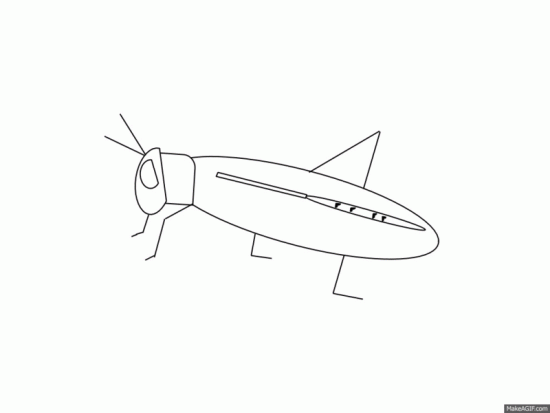Open Circulatory System Definition
Open circulatory systems are systems where blood, rather than being sealed tight in arteries and veins, suffuses the body and may be directly open to the environment at places such as the digestive tract.
Open circulatory systems use hemolymph instead of blood. This “hemolymph” performs the functions of blood, lymph, and intestinal fluid – which are three different, highly specialized fluids in animals with closed circulatory systems.
Instead of a complex and closed system of veins and arteries, organisms with open circulatory systems have a “hemocoel.” This is a central body cavity found inside most invertebrate animals where both digestive and circulatory functions are performed. This hemocoel may have “arteries” through which the blood can reach tissues – but these arteries are not closed and do not circulate blood as quickly as closed, muscle-assisted arteries.
Within the hemocoel, hemolymph directly absorbs nutrients from food and oxygen from the lungs or breathing pores. It also contains immune cells – but hemolymph does not have red blood cells like our own. Instead of using hemoglobin to carry oxygen, organisms with open circulatory systems use blue or yellow-green pigments to carry oxygen throughout the body.
Many animals that use open circulatory systems do have a heart – but the heart only pumps hemolymph to different cavities in the hemocoel. From these branches of the central body cavity, blood and the oxygen and nutrients it contains must penetrate the tissues and then return to the heart without the help of highly specialized pathways or muscle-assisted arteries like vertebrates possess.
Open circulatory systems are used by arthropods and most mollusks. This is one or several reasons why there are no giant insects; open circulatory systems are less efficient than closed circulatory systems, and cannot move oxygen efficiently enough to power large bodies.
Interestingly, while octopi and squid are considered mollusks, they have evolved closed circulatory systems. This is why they are able to reach huge sizes – colossal squid are thought to reach almost 50 feet in length, and weigh up to 1,650 pounds!
Function of Open Circulatory System
In all animals, circulatory systems perform several vital functions. The circulatory system can be thought of as a river connecting the specialized cells of the body, which allows them to perform the trade and communication upon which their survival depends.
There are a few vital functions that all circulatory systems must serve. These include:
- Transporting the oxygen that is necessary for cellular respiration
- Transporting nutrients from food, which are necessary for cellular respiration and other functions
- Transporting waste products of cellular respiration and other functions, which could otherwise build up to toxic levels within the body
- Transporting any necessary messages between cells, such as hormones signaling hunger, thirst, oxygen deprivation, or other bodily needs.
- Transporting immune cells which can fight infection to any area of the body where they might be needed.
Both blood and hemolymph accomplish these functions.
In closed circulatory systems, highly complex and specialized blood vessels and blood cells make these functions highly efficient. Within your own body, a system of closed arteries is lined with muscles to push blood through your entire body in only sixty seconds. Your body also has specialized blood cells that are very good at carrying oxygen from your lungs to other tissues.
Organisms with hemolymph systems do not have these advantages; they have a central body cavity, called a hemocoel, instead of a closed system of blood vessels. Instead of blood cells, less efficient oxygen-carrying pigments float freely in the hemocoel.
To keep their cells alive, organisms with open circulatory systems must be small enough that hemolymph can reach all of their cells and deliver the materials necessary for life without the aid of a highly developed circulatory system.
This is why arthropods and mollusks – the two major living groups of organisms with open circulatory systems – are typically small. Giant ants or spiders would not be able to supply their tissues with sufficient oxygen to survive, unless they evolved a closed circulatory system.
Quiz
1. Which of the following is NOT a difference between open and closed circulatory systems?
A. Closed circulatory systems have specialized arteries and veins; open circulatory systems do not.
B. In open circulatory systems, hemolymph performs the functions that are performed by blood, lymph, and intestinal fluid in closed circulatory systems.
C. Open circulatory systems usually do not have a heart.
D. None of the above.
2. Which of the following is NOT an organism you would expect to have an open circulatory system?
A. Hermit crab
B. Ant
C. Clam
D. Squid
3. Which of the following characteristics are shared by open and closed circulatory systems?
A. Red blood cells
B. Immune cells
C. Arteries, veins, and capillaries
D. None of the above
References
- Sakurai, A. (n.d.). Retrieved April 23, 2017, from http://www2.gsu.edu/~bioasx/closeopen.html
- “The Lymphatic System”. Human Anatomy (Gray’s Anatomy). Retrieved 2012-10-12.
- (n.d.). Retrieved April 23, 2017, from http://www.unmuseum.org/colossalsquid.htm
- Wells, M.J. (1 April 1980). “Nervous control of the heartbeat in octopus”. Journal of Experimental Biology. 85 (1): 111–28. PMID 7373208.

